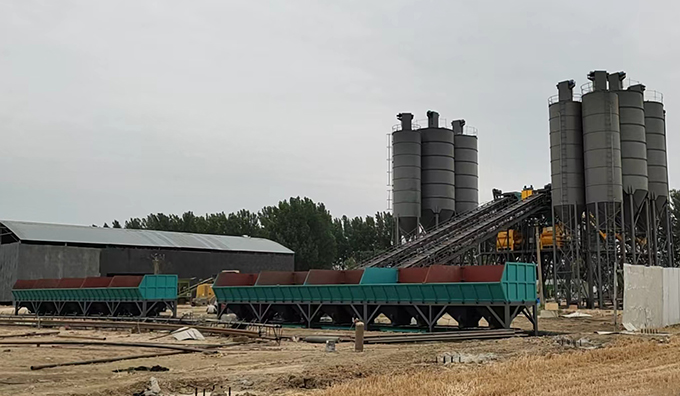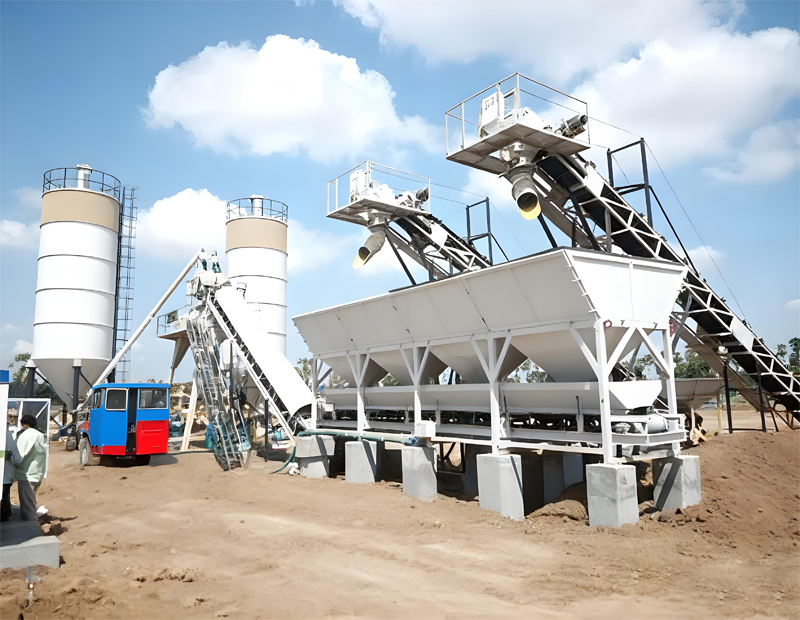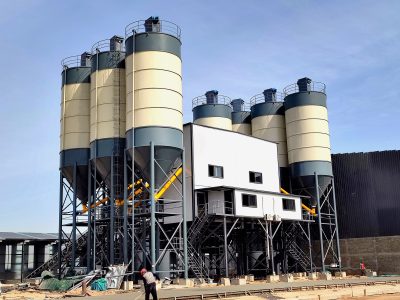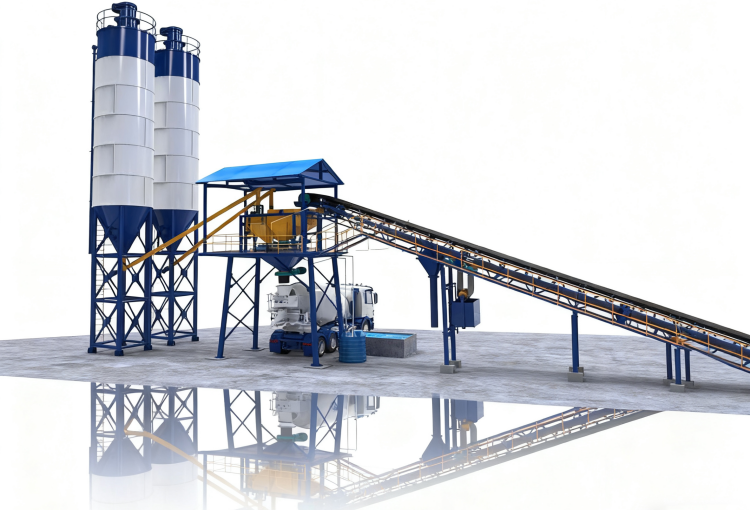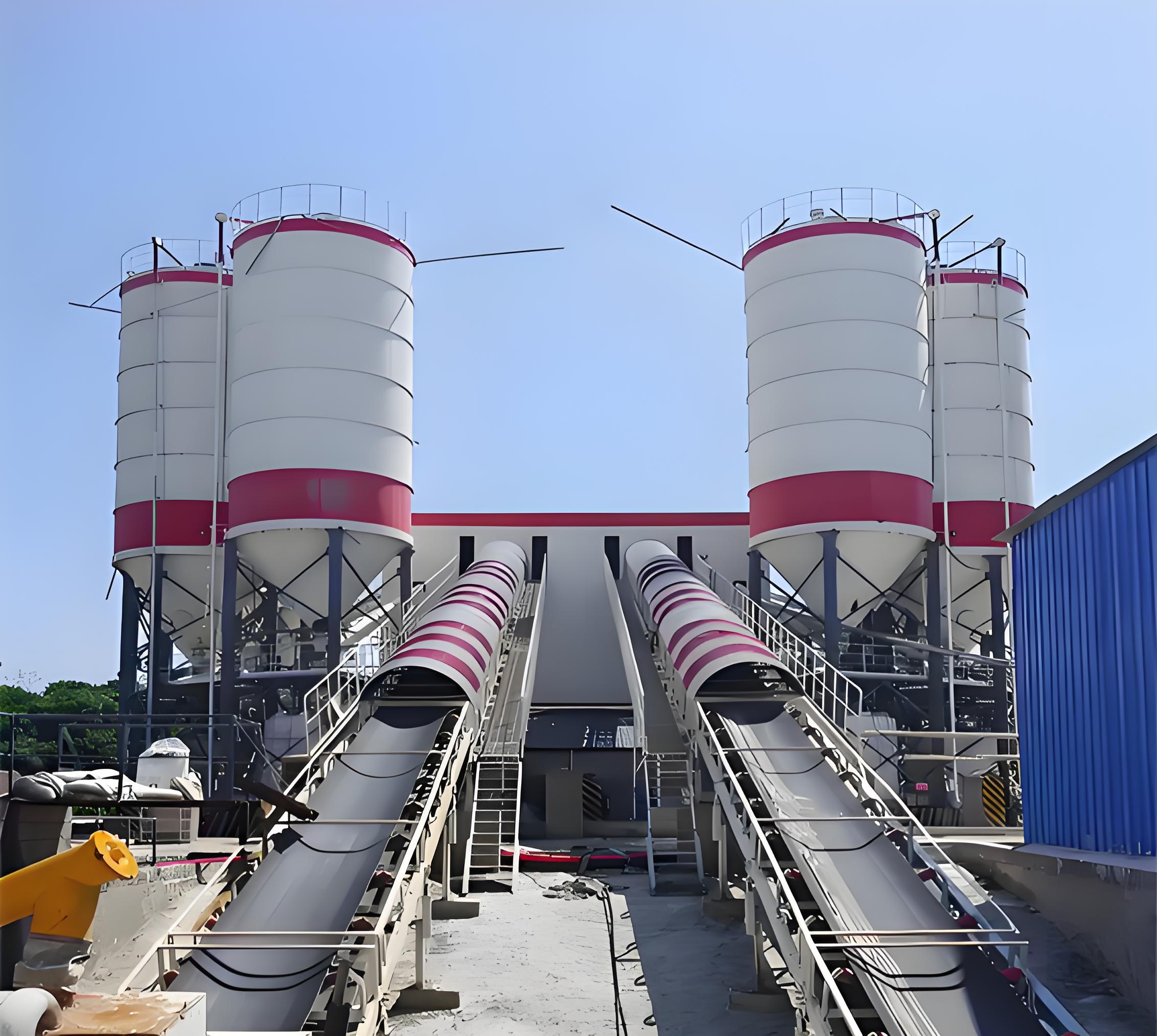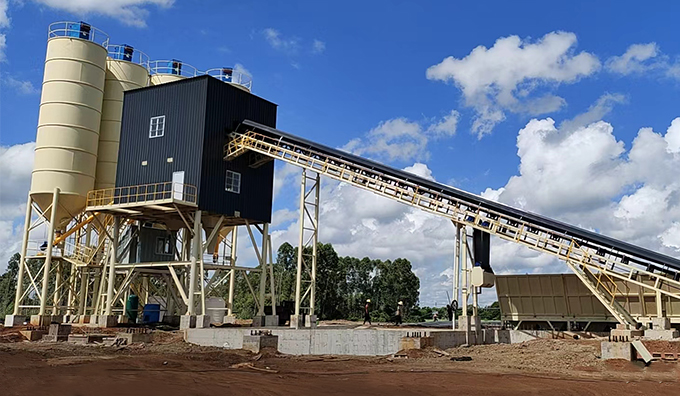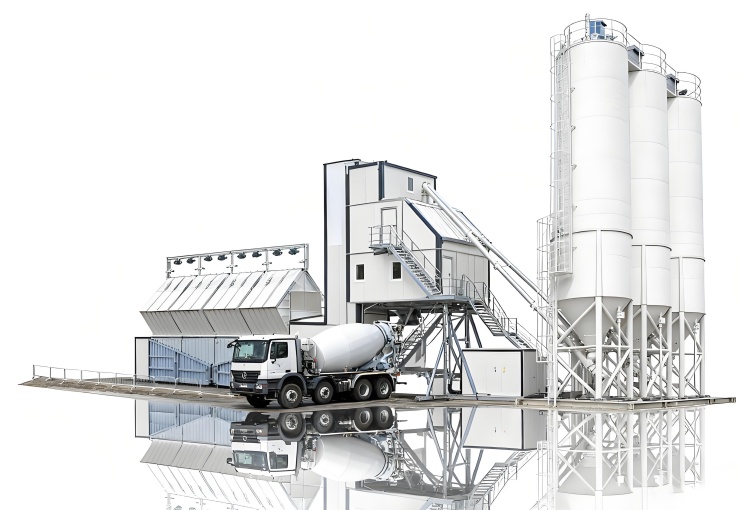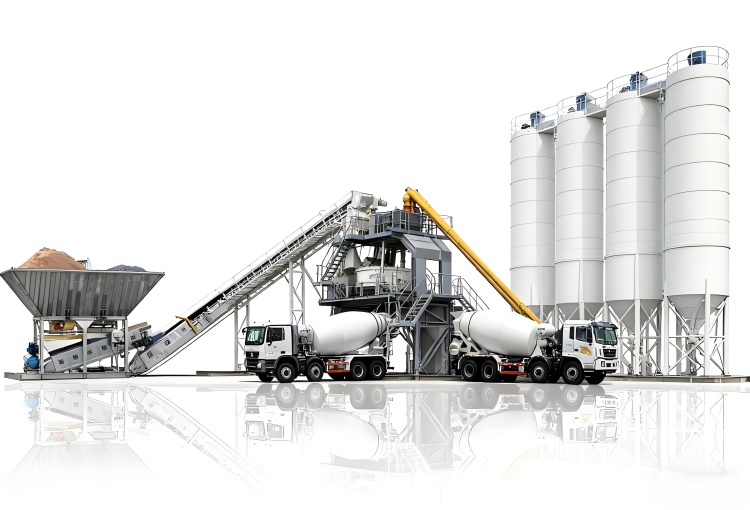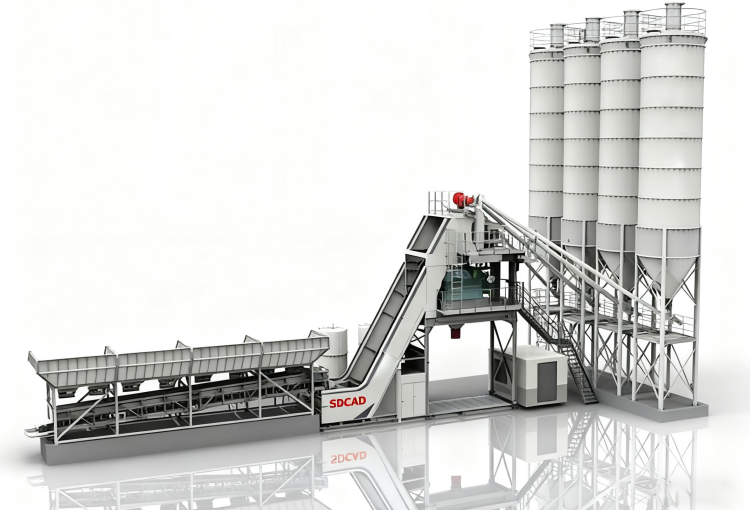Accurate weighing in a concrete batching plant is the foundation of consistent concrete quality. Every gram counts. Even a small deviation can affect mix ratios, structural integrity, and material costs. For example, a construction project using RMC (ready mix concrete) for high-rise buildings cannot tolerate inaccurate cement measurement.
Interestingly, many operators underestimate how factors such as environmental vibration, electrical interference, or poorly calibrated load cells can compromise accuracy. Improving weighing accuracy is not just technical—it’s a strategic advantage.
A well-maintained concrete batching plant, whether mobile or stationary, relies on precise measurement systems to optimize performance and reduce waste. Incorporating modern concrete batching plant control panels and automation software can significantly improve reliability.
Understanding the Weighing System
The weighing system of a concrete batching plant measures aggregates, cement, water, and admixtures before mixing. Key components include:
-
Load cells – measure weight of materials in hoppers.
-
Weighing frames – support hoppers while maintaining balance.
-
Control panels – process load cell data and interface with batching software.
-
Conveyors and feeders – transport measured materials accurately.
Even slight deviations in any component can amplify over multiple batches. For instance, a 0.5% error in aggregate weight may increase cement waste by up to 10 kg per cubic meter, translating to thousands of dollars lost in large-scale plants.
Key Components and Their Attention Points
Load Cells:
These are the “sensors” of the weighing system. Accuracy can be affected by vibration, moisture, or overload. Use high-quality IP68 stainless steel load cells, inspect mounting bolts, and avoid excessive mechanical shock.
Weighing Frames:
The structural integrity of hoppers and frames is crucial. Misalignment or wear can shift weight readings. Regularly check level using laser or digital levels. Bent supports must be replaced immediately.
Signal Cables & Connectors:
Oxidation or damaged cables can cause faulty readings. Use shielded cables, waterproof connectors, and replace annually.
Control Panel & Software:
The control system converts analog signals to digital data. Outdated firmware or software bugs may distort measurements. Regular updates and zero-tracking features are recommended.
Calibration and Verification
Zero Calibration:
Always empty hoppers before calibration.
Span Calibration:
Use certified standard weights at 20%, 50%, and 100% levels. Compare readings and adjust factors if needed.
Environmental Considerations:
Isolate hoppers from vibration, maintain temperature between 10–40°C, ensure proper grounding, and separate power cables from signal lines.
Routine Verification:
Record batch weights daily. Recalibrate immediately if deviation exceeds ±1%.
Maintenance Practices
-
Weekly visual inspections for cable wear, bolt loosening, and hopper cleanliness.
-
Monthly zero and span calibration.
-
Quarterly load cell alignment and leveling.
-
Semi-annual firmware and software updates.
-
Annual precision audits, preferably by third-party experts.
Common issues:
-
Vibration → install isolators, tighten bolts.
-
Moisture or temperature drift → use waterproof enclosures, stable climate.
-
No signal → check and replace load cells or cables.
-
Inconsistent batch weight → review software settings and recalibrate.
Benefits of Improving Accuracy
-
Consistent concrete quality, fewer rejected batches.
-
Reduced material waste, especially cement.
-
Faster production cycles, higher output reliability.
-
Better compliance with standards such as ASTM and ISO 9001.
-
Enhanced customer confidence and project reputation.
Choosing a High-Accuracy Weighing System
When selecting new systems:
-
Consider plant capacity, material types, and automation level.
-
Use IP68 sealed load cells in dusty or humid environments.
-
Reinforced shielding is essential in areas with electrical interference.
-
Trusted brands include HBM, Flintec, Mettler-Toledo for sensors; Siemens, Omron, Schneider for control units.
FAQs
-
How often should calibration occur?
Every 30 days or after major maintenance.
-
Does temperature affect weighing accuracy?
Yes, strain gauge load cells drift with temperature changes.
-
What is the acceptable error range?
±1% for aggregates, ±0.5% for cement, ±1.5% for water.
-
How can a damaged load cell be detected?
Erratic readings, zero output, or no signal indicate a problem.
Is software calibration alone sufficient? No, it must be combined with physical weight verification.
Advanced Troubleshooting for Weighing Systems
Despite careful calibration and maintenance, weighing systems in concrete batching plants can encounter persistent issues. Identifying root causes quickly prevents costly downtime.
Common Problems and Solutions:
-
Erratic Weight Fluctuations:
Often caused by loose load cells or unlevel frames. Tighten mounting bolts, check leveling with digital levels, and verify that hoppers are stable.
-
Signal Interference:
Electrical noise from nearby equipment can distort readings. Use shielded cables, proper grounding, and maintain separation between power and signal lines.
-
Moisture Damage:
Rain or high humidity can penetrate enclosures. Upgrade to IP68 load cells and waterproof junction boxes; check seals regularly.
-
Temperature Drift:
Extreme heat or cold changes load cell sensitivity. Install temperature-compensated load cells and maintain plant environment within recommended limits.
-
Software Errors:
Firmware glitches or outdated batching plant software can misreport weights. Implement scheduled updates and maintain backup configurations.
Case Insight: In a mid-sized concrete batching plant in Malaysia, frequent weight discrepancies were traced to electromagnetic interference from nearby high-voltage transformers. After relocating cables and installing shielded conduits, accuracy improved by 1.5%, saving approximately 8 tons of cement per month.
Precision Improvement Techniques
Achieving high-accuracy weighing is a combination of hardware optimization, software control, and operator skill.
1. Multiple Load Cell Redundancy:
Use two or more load cells per hopper to cross-check readings. Discrepancies trigger automatic alerts for maintenance.
2. Automated Calibration Cycles:
Some modern concrete batching plants feature built-in auto-calibration routines, which run at off-peak hours, reducing human error.
3. Weight Verification Protocols:
Install check weights or weigh buckets daily to validate system accuracy. Record results in digital logbooks for trend analysis.
4. Moisture and Material Compensation:
Sensors can measure moisture in sand and aggregate. Adjust water content in real-time, maintaining the correct slump and weight ratios.
5. Vibration Isolation:
Concrete batching plants are prone to vibration from mixers, conveyors, and trucks. Install rubber pads or anti-vibration mounts under hoppers and load cells.
6. Operator Training:
Train staff on proper weighing procedures, reading tolerances, and troubleshooting minor errors. A skilled operator can often prevent batch rejection before it occurs.
Safety & Best Practices
Safety and accuracy go hand in hand. Implementing strict operational protocols ensures both reliable measurements and a safe working environment.
Daily Safety Checks:
-
Confirm all hoppers and weighbridges are free from debris.
-
Verify emergency stop buttons and interlocks on control panels.
-
Inspect electrical wiring for insulation wear.
Operational Best Practices:
-
Avoid overloading hoppers; adhere to rated capacities.
-
Schedule calibration and maintenance during low-production periods.
-
Maintain a clean, dry environment around weighing components.
Best-in-Class Approach: Combine routine preventive maintenance with predictive software analytics. Modern concrete batch plant software can generate early warning signals for load cell drift, hopper misalignment, or moisture anomalies.
Performance Optimization Strategies
Optimizing weighing accuracy directly impacts production efficiency and cost control.
Integrated Automation:
Link weighing systems to batching plant software for automated batch control. Real-time feedback reduces human error and ensures consistent output.
Data Analytics:
Use historical data to identify trends in material consumption, batch deviations, and equipment wear. For example, plotting daily cement weight deviations can reveal load cell aging patterns.
Predictive Maintenance:
Combine sensor data with AI-driven analytics to predict when a load cell or conveyor component may fail. Proactive repairs prevent unplanned downtime.
ROI Benefits:
Accurate weighing reduces material waste, avoids costly rework, and maintains consistent concrete quality. Over a year, improved weighing accuracy can save thousands of dollars in cement and aggregate costs while improving client satisfaction.
Case Studies & Practical Examples
Example 1: Mobile Concrete Batching Plant (UAE)
A contractor using a mobile concrete batching plant near a highway experienced inconsistent aggregate weights due to vibration. Installing isolators and recalibrating load cells reduced error margins from ±2% to ±0.5%, improving project efficiency and reducing material cost by 12%.
Example 2: Ready Mix Plant (India)
A ready mix concrete plant operator job involved frequent batch complaints due to high cement deviation. Implementing daily span calibration, moisture compensation, and digital logging resulted in uniform batches and a 15% reduction in cement waste.
Conclusion & Expert Recommendations
Improving the accuracy of weighing systems in concrete batching plants is not just a technical upgrade—it is a strategic investment. Precise measurement ensures:
-
Consistent concrete quality
-
Reduced material waste and cost
-
Higher production efficiency
-
Compliance with international standards
-
Enhanced client trust and market reputation
Actionable Recommendations:
-
Invest in high-quality load cells and control panels.
-
Implement regular calibration routines with documented verification.
-
Train operators thoroughly on weighing and batching protocols.
-
Use automation and sensor feedback to maintain precision.
-
Apply predictive maintenance analytics to preempt issues.
Notably, even small improvements in weighing accuracy have a compounding effect. A 1% increase in precision can save hundreds of kilograms of cement per month in large-scale plants—translating to significant cost savings and improved competitiveness.
By treating the weighing system as a critical operational pillar and following these expert strategies, any concrete batching plant—stationary or mobile—can maximize efficiency, reduce waste, and deliver top-quality concrete consistently.

